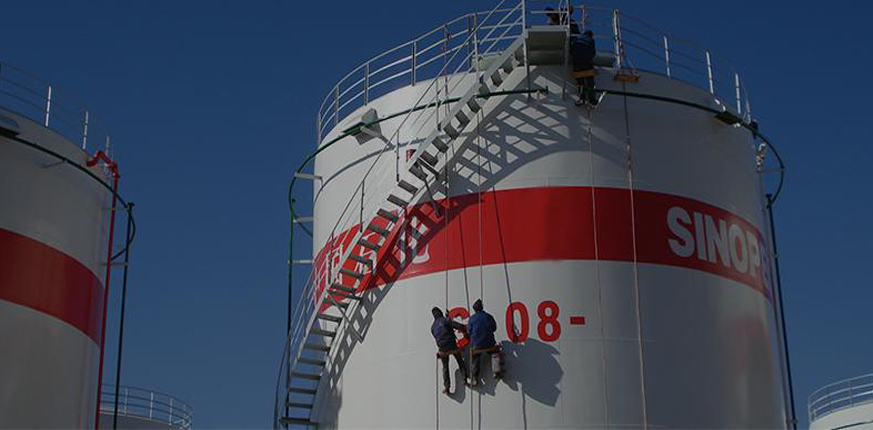The non-carbon epoxy antistatic anticorrosive finish is a topcoat that prevents the generation and accumulation of static electricity charge on the inner wall of a steel storage tank and has good anti-corrosion properties. It contains special conductive materials, anti-rust pigments, curing agents and additives. It is characterized by low surface electricity resistance, good electrical conductivity, quick elimination of static charge accumulation, good resistance to media (water, kerosene, diesel, gasoline, etc.) corrosion, suitable for inner walls of oil storage tanks, and another antistatic area in electronic industry.
The film with excellent corrosion resistance and stable resistivity.
Excellent resistance to penetration and without polluting to oil.
Excellent heat resistance (≤200 ℃)
Tough film with abrasion resistance and good workability
Type | Solvent | ||||
Solid Content | 70% | ||||
Mixing Ratio | Two components Part A: Part B=5:1 by weight | ||||
Dry Film Thickness | 50μm per coat | ||||
Specific Gravity | 1.3 kg/Liter | ||||
Coverage Rate (Theoretical) | 0.11kg/m2/50μm 0.085L/m2/50μm | ||||
Drying Time | Temperature | 10℃ | 20℃ | 30℃ | |
Dry to touch | 2.5hrs | 2hrs | 1.2hrs | ||
Dry Hard | 18hrs | 12hrs | 10hrs | ||
Package | 24kgs for one kit: Part A 20kg and Part B 4kg | ||||

In the process of filling and discharging, the relative movement of the oil product with the tank body will increase the static voltage on the inner wall of the oil tank.
When liquid oil is flowing, filtering, mixing, spraying, flushing, filling and shaking, the electrostatic charge generation rate is higher than the leakage rate, and the electrostatic charge will also accumulate.
When the energy of the accumulated electrostatic discharge is greater than the minimum ignition energy of the combustible mixture, and the oil vapor and air mixture in the discharge gap is within the explosive limit range, combustion and explosion will occur.



